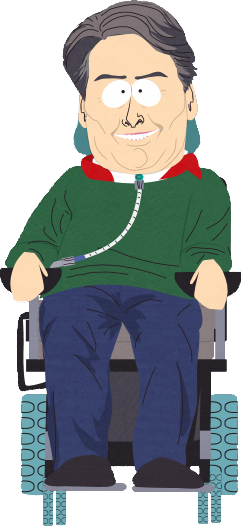
Raymond Onders (C) uses laparoscopic surgery to implant electrodes in Christopher Reeve's diaphragm at University Hospitals of Cleveland February 28, 2003, in Cleveland, Ohio. My youngest brother Will was three at the time of the accident and Dad taught him to ride a bike just by giving him instructions." Dr. He wanted to continue to be there as a husband and father. If he was feeling down, he got through it as quickly as possible. "Yet he chose to embrace what had happened, to put a face to a whole field of research and a community that didn’t really have a public voice, bringing awareness to the daily struggles they endure. "My father had a brief moment of depression at first, taking it hard because he was such an active guy," recalls Matthew. Besides, he also had episodes of autonomic dysreflexia, in which some stimulus below the waist, or even tight clothing, can make the autonomic nervous system hyperactive and cause blood pressure to shoot up. He flatlined three or four times," says Matthew. "One drug sent him into anaphylactic shock. Reeves, who famously played "Superman" in its 1978 adaptation, also endured multiple life-threatening health problems after the accident. He was a quadriplegic, had to be ventilated and needed 24-hour care." Alexandra Reeve, Will Reeve, and Matthew Reeve arrive for the Christopher Reeve Foundation Annual Gala at the Marriott Marquee November 6, 2006, in New York City. "His level of injury was one of the most severe, at C1 and C2, the highest two vertebrae in the neck. "We knew his life was in the balance and flew over immediately," Matthew recalls. In an exclusive conversation with Daily Mail, Matthew added: "I believe it is only a matter of years before innovative, technology-based therapies like epidural stimulation will become standard practice in the treatment and recovery from spinal cord injuries - and that patients like my father will walk again."Īt the time of his father's accident, Matthew was just 15 and living with mother Gae Exton, who was Christopher's former long-term partner. One of the earliest guys to receive epidural stimulation stood up to get married." It’s difficult for me not to get emotional when I see or hear about patients standing up out of their wheelchairs and taking steps. "This year, other patients of ours have been able to take steps, which is a truly remarkable watershed moment.

"A couple of years ago we made an announcement about our first four guys who were able to stand up," says 38-year-old Matthew, a screenwriter and the vice-chairman of the Foundation. Former actor Christopher Reeve and his son Matthew talk on the promenade overlooking the Mediterranean Sea on August 1, 2003, in Tel Aviv, Israel. Moreover, the Mayo Clinic in Minnesota, where Jered received his treatment, is one of three centers part-funded by the Christopher and Dana Reeve Foundation to conduct research on spinal cord injuries and further develop revolutionary treatments such as epidural stimulation. He had such belief and would say: 'We want to find a cure: let’s get it done'," says Matthew, emphatically.Īfter the fateful accident, the erstwhile Hollywood star created the Christopher and Dana Reeve Foundation, which is solely dedicated to improving the quality of paralyzed individuals and funding research into curing spinal cord injuries. Back then, a cure for spinal injury wasn’t thought to be a possibility but my father had great hope and worked relentlessly to raise money for research. Nobody who is injured today should be told that because it’s not true. "When he was injured, he was told: 'This is your wheelchair.

(Photo by Keystone/Getty Images)Īccording to Matthew, his father would have been "ecstatic" about the latest breakthrough in the treatment. 24-year-old American film actor Christopher Reeve stands before the Manhattan skyline dressed as the comic-book hero of the film 'Superman'. That said, Matthew Reeve, the eldest son of late actor Christopher Reeve, took particular interest in the news after his own father was left paralyzed from the neck down in a horse-riding accident in 1995 and later died from sepsis at the age of 42 following an allergic reaction to an antibiotic, Daily Mail reports. The pioneering treatment which bore fruits for Jered is called epidural stimulation, which involves electrodes surgically attached to the lower part of the spinal cord in order to "reconnect" nerve cells. The young American, who was told he would spend the rest of his life in a wheelchair, stunned onlookers after walking more than 100 meters with the aid of a wheeled walking frame. Five years after being paralyzed from the waist down in a snowmobile accident, 29-year-old Jered Chinnock took his first steps just a few weeks ago.


 0 kommentar(er)
0 kommentar(er)
